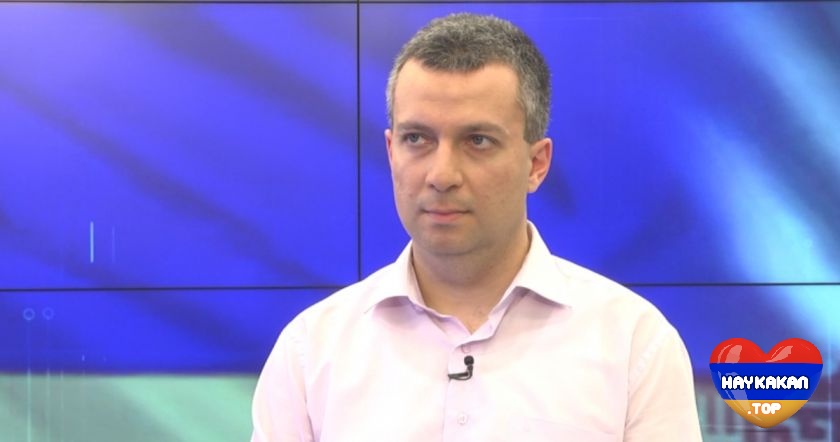Iran is one of the key geopolitical actors of the Middle East. Despite the current “diplomatic isolation and maximum economic pressure” campaign launched by the US President Trump Administration, Iran retains its capabilities of making serious impact on regional geopolitics. It exerts political and economic influence in Iraq, Syria, Lebanon and Yemen through various state and non-state actors and has a vast toolbox of asymmetric methods of political, economic and military struggle.
The South Caucasus is the integral part of the Iran’s neighborhood and plays significant role in Tehran’s geostrategic calculations. Definitely, South Caucasus is not as vital region for Iran as the Middle East, but from Iranian perspective, it is part of common Iranian civilizational area. It worthy to mention that till the first half of the 19th century vast territories of current Armenia and Azerbaijan were part of the Persian Empire, and Persia influenced also Georgia.
However, given Iran’s current geopolitical and geo-economic difficulties, Tehran has no resources to increase its influence in the South Caucasus. As for now, the key priority for Iran is to prevent the use of the South Caucasus as the launch pad for Anti-Iranian activities and protect the current level of its involvement and influence.
Armenia
Several factors are shaping Iran’s attitude towards Armenia. The most significant one is the Armenia’s role as a buffer between Turkey, Azerbaijan and Central Asia. Despite growing cooperation with Turkey since Erdogan’s ascendance to power including Turkey’s role in circumventing US sanctions during President Obama administration, Turkey and Iran are strategic competitors in the Middle East. Iran clearly understands that in case of land corridor becomes operational connecting Turkey and Azerbaijan, it will strategically increase Turkey’s capacities and capabilities.
Not surprisingly, Iran keeps balanced and neutral stance on Karabakh conflict. During meetings with Azerbaijani leaders Iranian officials sometime make some Pro-Azerbaijani statements, but in reality they are sending messages that Iran is fully satisfied by current status quo, opposes any changes on the line of contact and possible deployment of peacekeeping forces along the Nagorno Karabakh – Iran border.
Another important function of Armenia for Iran is the Yerevan’s role as alternative land corridor towards Russia and Europe via Georgia. Currently, Turkey serves as the main land route for Iranian exports and imports to Europe and Azerbaijan is the main land corridor connecting Iran with Russia. However, Iranians always prefer to have alternatives and Armenia perfectly fits there. As a path towards increasing its involvement in Armenia Iran creates favorable conditions for Iranian citizens to live and buy real estate in Armenia. The visa free regime between Iran and Armenia launched in August 2016 facilitates this process.
Iran also is wary of US activities in Armenia. Iranians clearly understand that the one of the key tasks of the huge US embassy in Yerevan is monitoring over Iran. In this context 2018 “Velvet revolution” in Armenia hs raised some anxiety in Iran. Tehran was fully satisfied with pre-revolution status quo of Armenia being under Russian control. Given the fact, that some key members of Armenian new authorities prior to revolution were actively working or getting funds from Western organizations, such as Transparency International and Open Society Foundation, Tehran was concerned that “Velvet Revolution” may transform Armenia into some spot of possible Anti-Iranian activities. The new Armenian authorities are making every effort to disperse these concerns. Prime Minister Pashinyan made an official visit to Iran in late February 2019 and at the beginning of July 2019 the 16th Session of Iran – Armenia intergovernmental session was held in Tehran.
As for economic cooperation two has sides has little to bolster beside the “Gas for Electricity” program through which Armenia receives natural gas via Iran – Armenia pipeline, transforms it into electricity and exports to Iran by 3 kw electricity for one cubic meter gas scheme. (Electricity covered 83.5 percent of all Armenian exports to Iran in 2018. Armenia imported 567 million cubic meter gas from Iran and exported 1 billion 839 million kw hour electricity that year).
Azerbaijan
Azerbaijan is probably the most important country for Iran in the South Caucasus. It has majority of Shia Muslim population, which creates strong religion bonds between two states, though due to 70 years of Soviet rule, Azerbaijani society is much less pious. But key factor for Iran’s attention towards Azerbaijan is the existence of approximately 20 million Azerbaijani speaking population in Iran leaving alongside the Iran – Azerbaijan border. This part of Iranian society is well integrated into Iranian state system and many high level officials, including Supreme Leader Khamenei, are representatives of Azerbaijani speaking population.
However, Iran has a concern that Azerbaijani territory may be used as a launch pad to sow dissent and separatist mood in these regions. The establishment of short lived Azerbaijan People’s Government with the support of Soviet Union in late 1945 in the Azerbaijani speaking territories of Iran is a start warning for Tehran about the possibility of new separatist movement fostered by outside forces. The several reports on US and Israeli intelligence services activities in Azerbaijan targeting Iranian interests only increase concern in Tehran.
Iran seeks to use the signs of growing activities of Islamic movements in Azerbaijan to bolster its influence there. Meanwhile, Azerbaijan is wary of such developments. The key center of Azerbaijani Shia movement – Nardaran, located some 30 km outside Baku, is kept under permanent attention of Azerbaijani security services. In November 2015 Azerbajani law enforcement forces launched a military operation in Nardaran against Shiite activists which resulted in several casualties. Azerbaijan’s Interior Ministry and Prosecutor General’s Office have issued a statement regarding the incident, which said that the Shiite leaders plan to change the constitutional order with violence and apply new rules of Sharia.
Azerbaijan is perceived by Tehran also as a significant economic partner allowing to establish land corridor with Russia and then to Europe. Iran, Azerbaijan and Russia are active members of “North – South” international corridor which will connect India through Iranian Persian Gulf ports, Azerbaijan and Russia with Northern Europe. Azerbaijan has already connected its railway with Iranian border town of Astara and offered Iran 500 milion USD loan to construct Astara – Rasht railway which will connect Azerbaijan railway system with Iranian internal network. As for Azerbaijan, “North – South” corridor is a possibility to bolster Azerbaijan’s transit role alongside with the Trans Caspian International Transport Route, which connects China via Kazakhstan, Caspian Sea, Azerbaijan and Turkey to Europe.
The Presidents of Azerbaijan, Iran and Russia hold two trilateral summits in August 2016 and November 2017 and the third summit will take place in August 2019 in Sochi. Iran view Azerbaijan also as a vital link to connect Iranian and Russian energy systems which will allow to import and export electricity.
Georgia
Compared to Armenia and Azerbaijan, Georgia has less importance for Iran. Two states share no land border, and the Georgia’s path towards Euro-integration, including membership into EU and NATO, as well strategic partnership with the US, put some objective restraints on relations. However, Iran views Georgia as an alternative route to Europe via Armenia and alongside with Georgia, Armenia, Greece and Bulgaria is involved in the negotiations to launch “Persian Gulf – Black Sea” multimodal transport corridor which will link Iranian Persian Gulf ports with Europe via Armenia and Georgian Black Sea coast.
Iran is interested also to connect its energy systems with Russia not only via Azerbaijan, but via Armenia and Georgia too. The four states (Armenia, Georgia, Iran and Russia) have signed Memorandum of understanding on establishment of energy corridor in April 2016. However, project may be implemented only after the launching of the third high voltage electricity transmission line between Armenia and Iran (construction supposed to be finished at the beginning of 2019, but currently only 20-25 percent of line is ready and it will be finished in late 2021), as well as after the launching of the new electricity transmission line between Armenia and Georgia, construction of which has not started yet.
As for Georgia, Iran is interesting as a gateway to the Middle East and to the Indian Ocean. The mutual visa free travel regime was reintroduced in February 2016 immediately after the elimination of some international nuclear related sanctions. Georgia may become also the top destination for Iranian tourists in the South Caucasus eventually putting aside Armenia. Given Georgia’s interest to expand its cooperation with China and be included into the “Belt and Road” initiative increasing cooperation with Iran may be welcomed by China too. However, as far as Georgia’s strategic course is Euro-Atlantic integration; Georgia will show restraint in coming to close to Tehran.
Perspectives of Relations
Iran will closely watch domestic and foreign policy developments in Armenia. Any deterioration in Armenia – Russia relations will raise concerns in Iran, as Tehran will perceive it as a step towards increasing US influence in Yerevan. Iran will continue to send clear messages to Armenia that raising US influence or Armenia’s actions to decrease level of cooperation with Iran due to the American pressure will definitely resulted in changes in Iranian policy. One of the possible trump cards for Tehran in its relations with Armenia is the change of its balanced policy on Karabakh. In more extreme case, Tehran may support Azerbaijani efforts to present the Karabakh conflict as a religious one, thus creating serious difficulties for Armenia and Karabakh. However, in case of no significant changes in Armenian foreign policy, the current level of Armenia – Iran cooperation will remain intact, with possible increase of gas/electricity exchange scheme volumes.
Iran will continue its multifaceted policy towards Azerbaijan. Tehran will seek to deepen economic cooperation, also in trilateral Iran – Azerbaijan – Russia format, trying to create economic incentives for Azerbaijan to refrain from Anti-Iranian policy. However, key leverage for Iran in its relations with Baku is growing Islamist activities in Azerbaijan. Tehran will continue to tacitly support these movements, simultaneously hinting to Baku that in case of crossing of red lines by Azerbaijan Iran has both capacities and capabilities to destabilize domestic situation there.
Iran – Georgia relations will continue to be less developed. Simultaneously, both countries are ready to expand economic cooperation and develop new transport infrastructure, but here much depends on Yerevan ability to significantly improve highways connecting Georgia and Iran via Armenia.

Dr. Benyamin Poghosyan, Chairman, Center for Political and Economic Strategic Studies, Executive Director, Political Science Association of Armenia





